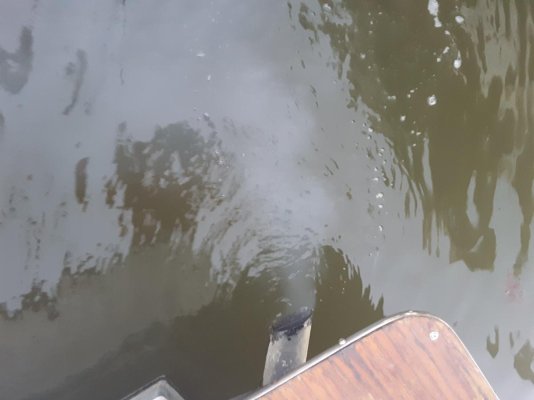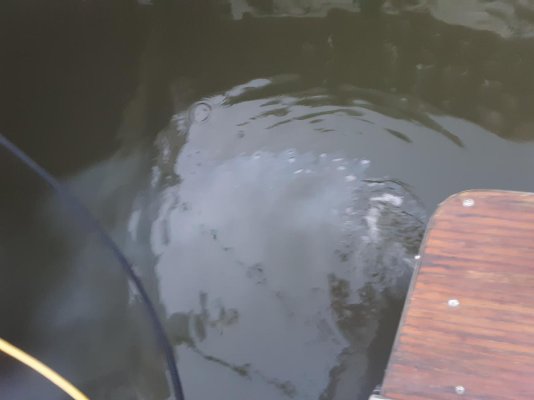You are using an out of date browser. It may not display this or other websites correctly.
You should upgrade or use an alternative browser.
You should upgrade or use an alternative browser.
Diesel fuel in oil
- Thread starter Dwk
- Start date
The friendliest place on the web for anyone who enjoys boating.
If you have answers, please help by responding to the unanswered posts.
If you have answers, please help by responding to the unanswered posts.
STB
Guru
Within the range of normal
STB
Guru
The thing about the 6.354s that I've seen is that they can be all over the place w.r.t. white smoke at the slip. Most of them are "about" like yours. A few, especially some of the newer "Dot 4" engines (and also some of the older engines) seem to run much cleaner. The turbo versions, on average, seem to smoke a little more.
I've got two newly rebuilt engines: ~200 hours on one and ~100 hours on the other. You'd think that they'd be the cleanest 6.354s out there. But, they aren't. They are about average.
My own personal theory is that the hydraulic heads on the injector pumps are wearing a little over the years and this isn't a part that they replace or in any way tune when they overhaul the pump. I think it is the wear on the hydraulic head, not the engine, that often times generates the smoking. And, I think it only really shows itself under the very small charges needed at no load that turn out a little larger
I've seen engines run really cleanly at the slip, the pumps get replaced with rebuilt as part of scheduled maintenance for prophylaxis, and come back running with some smoke. I think the rebuilt pump just had more wear, even if all of the seals were new. The good news is that this doesn't effect much....those pumps are always squirrelly with the small charges needed at low load. They seem to do much better with larger charges under higher loads.
With those pumps, I'm much more concerned with smoke under load than at idle. With larger charges they should run pretty dialed in.
So, w.r.t. your engines, I can only tell you what I'd do if they were mine. I'd take the smoke as a data point, which is that they aren't as clean as I'd like, but within the range of what is normal. I wouldn't focus exclusively on it. Smoke at the slip just isn't that great a metric on those engines.
I'd be concerned about the whole picture:
-- changes in fluid levels and character of fluids
-- oil test (given the history, stay on these)
-- blowby
-- making sure the shutdown lever isn't partially engaged under normal operating conditions (replace external spring as needed)
-- Sound, e.g. valve rattle? tapping?
-- temperature, and changes in temperature for conditions
-- oil pressure, and changes in oil pressure for conditions
-- rpm stability under high load at high throttle (clogging fuel filters)
-- cooling system pressure test
-- coolant exhaust gas test
-- Character of smoke underway (under load)
-- Coolant or oil in smoke at slip
-- changes in the white smoking at slip
-- changes in any nuisance leaks, e.g. valve cover leak.
-- difficulty starting (but the diagnostic value of this is very poor...the engine I just rebuilt started up instantly and ran clean....but had metal in the oil. My other one has always started a hair slower...it is just a different starter)
As for the smoke, if that is the only thing that seems imperfect....I'd forget about it and enjoy the boat.
I've got two newly rebuilt engines: ~200 hours on one and ~100 hours on the other. You'd think that they'd be the cleanest 6.354s out there. But, they aren't. They are about average.
My own personal theory is that the hydraulic heads on the injector pumps are wearing a little over the years and this isn't a part that they replace or in any way tune when they overhaul the pump. I think it is the wear on the hydraulic head, not the engine, that often times generates the smoking. And, I think it only really shows itself under the very small charges needed at no load that turn out a little larger
I've seen engines run really cleanly at the slip, the pumps get replaced with rebuilt as part of scheduled maintenance for prophylaxis, and come back running with some smoke. I think the rebuilt pump just had more wear, even if all of the seals were new. The good news is that this doesn't effect much....those pumps are always squirrelly with the small charges needed at low load. They seem to do much better with larger charges under higher loads.
With those pumps, I'm much more concerned with smoke under load than at idle. With larger charges they should run pretty dialed in.
So, w.r.t. your engines, I can only tell you what I'd do if they were mine. I'd take the smoke as a data point, which is that they aren't as clean as I'd like, but within the range of what is normal. I wouldn't focus exclusively on it. Smoke at the slip just isn't that great a metric on those engines.
I'd be concerned about the whole picture:
-- changes in fluid levels and character of fluids
-- oil test (given the history, stay on these)
-- blowby
-- making sure the shutdown lever isn't partially engaged under normal operating conditions (replace external spring as needed)
-- Sound, e.g. valve rattle? tapping?
-- temperature, and changes in temperature for conditions
-- oil pressure, and changes in oil pressure for conditions
-- rpm stability under high load at high throttle (clogging fuel filters)
-- cooling system pressure test
-- coolant exhaust gas test
-- Character of smoke underway (under load)
-- Coolant or oil in smoke at slip
-- changes in the white smoking at slip
-- changes in any nuisance leaks, e.g. valve cover leak.
-- difficulty starting (but the diagnostic value of this is very poor...the engine I just rebuilt started up instantly and ran clean....but had metal in the oil. My other one has always started a hair slower...it is just a different starter)
As for the smoke, if that is the only thing that seems imperfect....I'd forget about it and enjoy the boat.
Last edited:
Pete Meisinger
Guru
- Joined
- Oct 7, 2012
- Messages
- 3,145
- Location
- USA
- Vessel Name
- Best Alternative
- Vessel Make
- 36 Albin Aft Cabin
The smoke really appears to be normal to me. At least for a Ford Lehman. The big question should be, are you still getting diesel into your engine oil. If not, your job here is done.
Go Boating.
pete
Go Boating.
pete
Jeff F
Guru
- Joined
- Nov 5, 2015
- Messages
- 2,435
- Location
- Canada
- Vessel Name
- Escapade
- Vessel Make
- 50` US Navy Utility trawler conversion
I don't see a lot of water coming out... On my old 34 the first sign of a bad impeller or clogged strainer was white steam in the exhaust. Different motor, but generally true, I think.
Sent from my moto g play (2021) using Trawler Forum mobile app
Sent from my moto g play (2021) using Trawler Forum mobile app
CharlieO.
Guru
- Joined
- Sep 21, 2020
- Messages
- 1,554
- Location
- Lake Champlain Vermont, USA
- Vessel Name
- Luna C.
- Vessel Make
- 1977 Marine Trader 34DC
I wouldn't even worry about that smoke, at idle and 145 degrees you're not up to operating temp yet.
Similar threads
- Replies
- 16
- Views
- 1K


